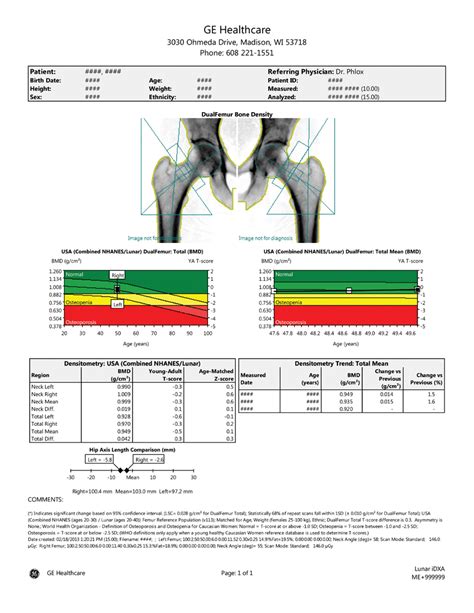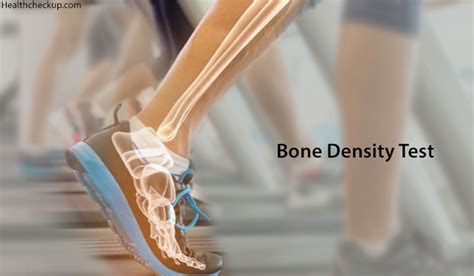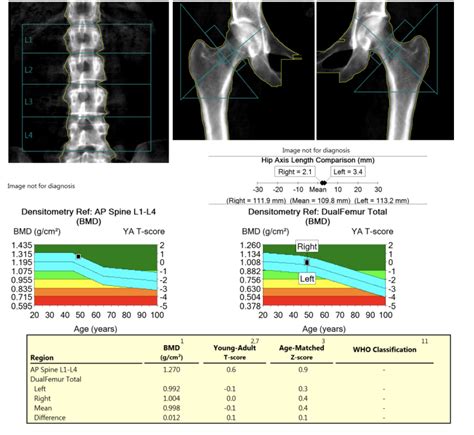Intro
Discover the importance of bone density tests in assessing osteoporosis risk and overall bone health. Learn what a bone density test shows, how its performed, and why it matters for preventing fractures and maintaining strong bones. Understand the impact of low bone density and how to improve it with lifestyle changes and medical treatments.
Bone density tests are a crucial diagnostic tool for assessing the health of our skeletal system. These tests provide valuable insights into the strength and density of our bones, helping doctors diagnose and monitor various bone-related conditions. In this article, we will delve into the world of bone density tests, exploring what they show and why they matter.
A bone density test, also known as dual-energy X-ray absorptiometry (DXA), is a non-invasive medical test that measures the density of bones in various parts of the body, typically the hips and spine. The test uses X-rays to determine the bone mineral density (BMD), which is the amount of minerals, such as calcium, in the bones. The results of the test are then used to assess the risk of osteoporosis, a condition characterized by brittle and porous bones.
What Does a Bone Density Test Show?

A bone density test provides a wealth of information about the health of our bones. Here are some of the key things that a bone density test can show:
- Bone Mineral Density (BMD): The test measures the BMD of the bones, which is the amount of minerals, such as calcium, in the bones.
- T-Score: The test results are expressed as a T-score, which compares the BMD of the patient to that of a healthy young adult of the same sex. A T-score of -1 to -2.5 indicates osteopenia, while a T-score of -2.5 or lower indicates osteoporosis.
- Z-Score: The test also provides a Z-score, which compares the BMD of the patient to that of a healthy person of the same age and sex.
- Fracture Risk: The test results can also be used to assess the risk of fractures, particularly in the hips and spine.
Why Do Bone Density Tests Matter?
Bone density tests are an essential diagnostic tool for assessing the health of our bones. Here are some reasons why bone density tests matter:
- Osteoporosis Diagnosis: Bone density tests are the most accurate way to diagnose osteoporosis, a condition that affects millions of people worldwide.
- Fracture Risk Assessment: The test results can help doctors assess the risk of fractures, particularly in the hips and spine.
- Monitoring Treatment: Bone density tests can be used to monitor the effectiveness of treatment for osteoporosis and other bone-related conditions.
- Prevention: The test results can also be used to identify individuals who are at risk of developing osteoporosis, allowing for early intervention and prevention.
How to Prepare for a Bone Density Test

Preparing for a bone density test is relatively straightforward. Here are some tips:
- Wear Loose Clothing: Wear loose, comfortable clothing that does not contain any metal, such as buttons or zippers.
- Avoid Calcium Supplements: Avoid taking calcium supplements for at least 24 hours before the test.
- Inform Your Doctor: Inform your doctor about any medical conditions or medications you are taking.
- Arrive Early: Arrive at least 15 minutes before the scheduled test time.
What to Expect During a Bone Density Test
A bone density test is a relatively quick and painless procedure. Here's what you can expect:
- Duration: The test typically takes around 10-30 minutes to complete.
- Positioning: You will be asked to lie on a table or stand in a specific position to ensure accurate results.
- X-ray: A low-dose X-ray beam will be used to measure the density of your bones.
- Scan: The X-ray beam will scan your bones, typically in the hips and spine.
Interpreting Bone Density Test Results

Interpreting bone density test results requires a good understanding of the T-score and Z-score. Here's a brief guide:
- Normal: A T-score of -1 or higher indicates normal bone density.
- Osteopenia: A T-score of -1 to -2.5 indicates osteopenia, a condition characterized by low bone density.
- Osteoporosis: A T-score of -2.5 or lower indicates osteoporosis.
- Z-Score: A Z-score of -2 or lower indicates a higher risk of fractures.
Common Conditions Diagnosed with Bone Density Tests
Bone density tests are commonly used to diagnose and monitor various bone-related conditions, including:
- Osteoporosis: A condition characterized by brittle and porous bones.
- Osteopenia: A condition characterized by low bone density.
- Rickets: A condition characterized by softening of the bones in children.
- Osteomalacia: A condition characterized by softening of the bones in adults.
Limitations and Risks of Bone Density Tests

While bone density tests are an essential diagnostic tool, they do have some limitations and risks:
- Radiation Exposure: Bone density tests involve exposure to low-dose X-rays, which can increase the risk of cancer.
- Limited Accuracy: Bone density tests may not be accurate for individuals with certain medical conditions, such as osteomalacia.
- False Negatives: Bone density tests may produce false negative results, indicating normal bone density when it is actually low.
Alternatives to Bone Density Tests
There are several alternatives to bone density tests, including:
- Quantitative Computed Tomography (QCT): A test that uses X-rays to measure bone density.
- Peripheral Dual-Energy X-ray Absorptiometry (pDXA): A test that uses X-rays to measure bone density in the peripheral skeleton.
- Ultrasound: A test that uses high-frequency sound waves to measure bone density.
Conclusion
Bone density tests are a crucial diagnostic tool for assessing the health of our bones. By understanding what bone density tests show and why they matter, we can take proactive steps to prevent and manage bone-related conditions. If you are concerned about your bone health, consult with your doctor about getting a bone density test.
What is a bone density test?
+A bone density test is a non-invasive medical test that measures the density of bones in various parts of the body, typically the hips and spine.
What does a bone density test show?
+A bone density test provides information about the bone mineral density (BMD), T-score, Z-score, and fracture risk.
Why do bone density tests matter?
+Bone density tests matter because they can help diagnose and monitor osteoporosis, assess fracture risk, and monitor treatment effectiveness.
